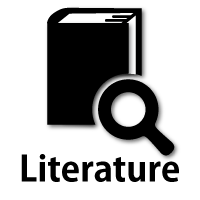Hereditary myopathies
Muscular dystrophies
4. Facioscapulohumeral muscular dystrophy (FSHD)
(1) Pathophysiology
The facioscapulohumeral muscular dystrophy (FSHD) is also called Landouzy-Dejerine type muscular dystrophy. It is characterized by atrophy of the muscles listed in the name of the disease, namely facial, scapular and humeral (upper arm) muscles are affected in early stage of disease. It is the third most common form of muscular dystrophy occurring in 5 out of 100,000 population. It is inherited in autosomal dominant manner, but sporadic cases are common.
In FSHD1, commoner form, deletion of copies of DNA repeat fragment called D4Z4 at the subtelomere of the chromosome 4q was discovered. The number of D4Z4 repeat units (RU) varies in general population between 11 and 110, whereas patients with FSHD carry 1 to 10 RU. Although D4Z4 contains exon 1 and 2 of DUX4, the only the most telomeric D4Z4 can produce its transcript, DUX4, helped by polyadenylation consensus sequence distal to the D4Z4 repeat. This consensus sequence is functional only in 4qA allele among normal polymorphisms. Repeat contraction is associated with decreased repressive epigenetic marks in the remaining D4Z4 units. Overexpression of DUX4 protein in varieties of cells, including skeletal muscles cells, causes apoptosis. FSHD is due to a toxic gain-of-function, where normally silenced DUX4 gene gets “turned on” (Kowaljow, 2007; Johnson, 2019).
FSHD2 is a less common form which occurs in about 5 to 10% of FSHD. It does not harbor contraction of D4Z4 repeat at 4q subtelomere. Instead, it shows hypomethylation of D4Z4 repeat along with at least one 4qA allele. Generally, epigenetic repression by methylation turns off genes. FSHD2 is associated with mutations in genes of chromatin repressor genes including SMCHD1, DNMT3B and LRIF1 (Socconi, 2015, 2019; Hamanaka, 2016, 2020). FSHD with D4Z4 repeats of 8 to 10 RU may include cases of FHSD1+2, harboring both contraction of D4Z4 and mutation of repressors (Sacconi, 2019).
It is yet to be seen if there is difference in clinical manifestation between FSHD1 and FSHD2.
(2) Symptoms and signs
Symptoms are commonly noticed in the teens and include difficulty in raising arms, with weakness of facial muscles that is already present at this stage. Weakness of lower limbs becomes evident with gradual progression of the disease. Late-onset disease is common. The orbicularis oculi and oris muscles are commonly affected in the early stages. Winging of the scapula occurs owing to weakness of the muscles that fix the scapula to the back, and the lateral margin of the trapezius muscles becomes prominent on both sides of the neck. The anterior tibial muscle shows early involvement. Involvement of the retinal blood vessels (Coats syndrome, Wulff, 1982) and hearing difficulty are reported (Taylor,
1982).
(3) Histopathological examination
Histopathological changes are consistent with myopathy but vary in their degree of severity; however, usually they are often inconspicuous or localized. Angulated atrophic fibers arranged in small groups are commonly identified. Mild degrees of type 1 fiber atrophy, abnormalities in the internal structure of fibers, and fibrosis of the interstitial tissue are noted. Moderately hypertrophic fibers are occasionally identified, and inflammation is common.




